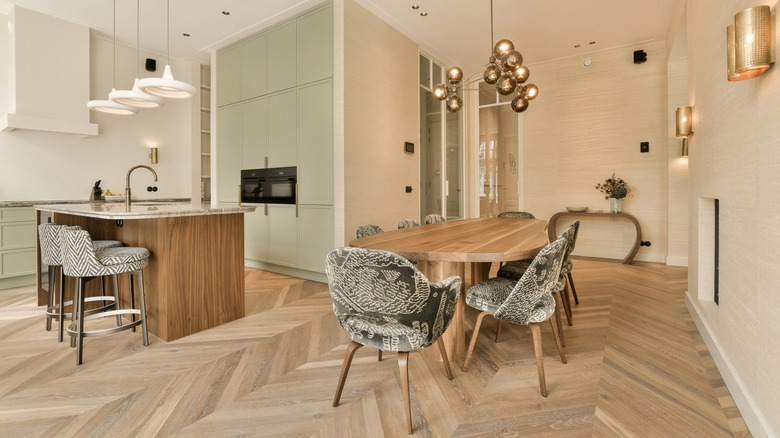How Far A Table Should Be From The Wall For Comfortable Dining
Imagine sharing a meal with your loved ones and needing to stand to get something from the kitchen or go to the bathroom. This is a mindless task if you have a well-planned space, but this is a much more difficult task when you have a cramped dining area. Having to ask your guests to budge a bit or even stand just so you can leave the table can create discomfort, as no one likes having their meals and conversations interrupted.
That's why it is essential to leave enough space around the table. At least 36 inches between the edge of your dining table and the wall or any surrounding furniture is recommended, as this will create a functional and comfortable environment for both dining and socializing. This distance will not only allow diners to get in and out of their chairs, but also ensures that they do not feel cramped.
This seemingly simple guideline will not only make a statement with your dining room, but also significantly enhance the overall dining experience you will have with the people you love. This means no more interrupted conversations, bumped hips, or "excuse me" spiels.
Why space is important between table and wall, furnitures
Having your dining table at least 3 feet from the wall allows for comfortable traffic flow from and around the table. It can become difficult for guests to pull out their chairs without this clearance and would make the overall experience feel unpleasant. If this distance is maintained, those seated or standing will be able to stand up or pass through without disruption. This can also help maintain the functionality and visual appeal of your dining room. Having that much space between the table and walls helps keep the room looking balanced and uncluttered, and, if you have the room, allows you to place other furniture or decorations in your dining area without overcrowding it.
But what if the recommended 36-inch distance isn't possible? There are many ways to maximize your small dining room, and this includes selecting a more compact table that fits better. It's a good move to choose round tables because they're typically more compact than rectangular ones. You can also consider using a foldable or extendable dining table. You can use these tables if you want to accommodate additional guests beyond the usual diners in your home from time to time.
It's possible to create a comfortable dining experience in smaller spaces without sacrificing style or functionality, but only if you carefully plan your layout and make thoughtful furniture choices. You can create a dining area that feels inviting and easy to navigate, no matter the size of the room, by being mindful of your dining area's features and the furniture options available.

